A slightly misspelled sign at the rear of the sanctuary of Lao Unity Church, Sioux City, Iowa, encourages worshipers to remove their hats during worship. If you ask Keo Phommarath, one of Lao Unity’s two pastors, about the sign, he’ll take you back to Laos, homeland of most of the congregation, explaining that the Asian people who visit the church will understand the gesture.
Laotian people in the Sioux City area, most of them meat packers, reflect various hues of their culture’s native Buddhism or animism. Almost to a person, their introduction to this peculiar Western faith was in the Thai refugee camps where all of them lived at one time or another prior to their immigration. If they are asked to remove their caps, Keo claims, they’ll know immediately that they’re entering a place of some importance, some gravity.
From a Black Market Operator to a Pastor
Lao Unity is peculiarly a first-generation ethnic congregation. It was born from the need Asian refugees felt to understand the Christian faith in their own language. To immigrate, all of them required sponsors; most worshipers at Lao Unity were sponsored by Protestant and Roman Catholic churches. Most will tell you that they attended Christian worship during their first years here as a means to an end—getting the help those churches offered and freely gave.
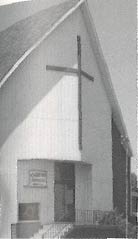
Lao Unity Church began in the whole counsel of God, of course, but its human birth date occurred one day in the early 1980s, when Khay Baccam, now Lao Unity’s senior pastor, was being tutored in the English language by a volunteer named Adrianna Dokter. One day, Khay says, he stopped her and asked a question. “Why you do this?” he said in his tangled English. “You have nothing else to do?”
First, he says, she told him that she loved him. “I love your family too. I come here and teach you. I want you to know the Lord Jesus Christ.”
That was confusing. “I sat there and did nothing,” he says, “and then I saw her tears come out. I told myself, ‘Here I am—a poor Laotian—why for me? Am I that important that someone cry for me? I even look at myself and cry for myself.’” He says he knew there was something significant about the Bible she always carried, stained as it was by coffee rings. “Something happened—something happened in that book. So I asked her, ‘Please teaching me from this book.’”
Khay Baccam became a believer. Former black market operator, dealer in war munitions left behind when the U.S. departed Southeast Asia, starved prisoner who just about died in communist re-education camps after the Pathet Loa took over Laos, Khay Baccam became what Adrianna Dokter saw that he could, a passionate believer in Jesus Christ, a man with a heart for bringing his brothers and sisters to the love of the gospel.
What he’s worked on ever since is a number of small, concentrated Bible studies throughout Iowa, Minnesota, and Nebraska, undertaken in the Lao tongue. Which explains why, if you arrive for the service at Lao Unity fifteen minutes early, there may be no one there to greet you and hand you a bulletin except Bounjoon, Pastor’s Keo’s wife. That’s because, in the converted balcony of what was once an Open Bible Church (and still is, certainly), most of the adults who will worship at 11:00 a.m. are studying God’s Word together.
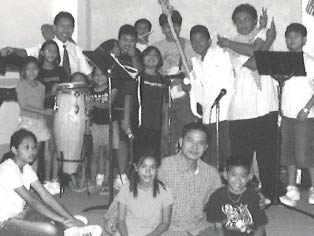
East of Mercy
Lao Unity Church is just a few years old. They’re the proud occupants of an older building in Sioux City’s downtown area, Sixth and Court, just east of the sprawling Mercy Medical Center. Most Sundays as many as fifty adults and almost as many children, who are released, noisily, a quarter of the way into the service to attend children’s church, will gather for worship.
Worship is a multicultural concoction most would simply call “blended.” Unless there happens to be a significant presence of what the Lao people call “Americans,” very little is said in any language other than the Lao tongue.
The pastors at Lao Unity, both of them converts to the Christian faith, have no tradition on which to build worship style. What they began with was simply what they were coached in by the “Americans” who helped them, all of whom happened to be Reformed Christians. So there’s a call to worship, some introductory musical numbers, the reading of the Ten Commandments, a hearty sermon, and an offering (during which the deacons stand up front, bags in hand, heads bowed, while one of them offers prayer). Worship concludes with Old Hundredth, in Lao, the only melody most worshipers seem to know well enough to sing energetically.
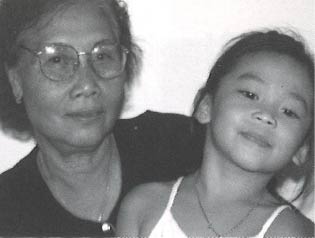
Music
Still, music plays a significant role in worship at Lao Unity. Several of its most prominent members played and sang in party bands long before they became believers, including Pastor Keo. Their introductory praise music—lyrics in Lao on overhead—is a mixture of familiar and unfamiliar praise and worship offerings.
One segment of worship music at Lao Unity is authentically Laotian. Tones change, harmonies modify, and maybe one or two members of the team will raise their hands and twist their wrists slowly in a fashion peculiarly Asian. The bulletin names that music simply “Ministry Song.” It is beloved.
Congregational singing is something of an anomaly to refugees who have little history in Christian worship, but it’s very clear that music is very important to their worship, especially when it carries for them some harmonic and rhythmical touch of the homeland.
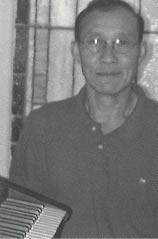
It’s About Community
You don’t have to understand the language to know that both pastors are energetic and passionate preachers, and it’s a joyful wonder to know that this congregation is traceable to a weekly English language lesson a quarter century ago. Lao Unity grew, in grace, from a single human relationship.
But it’s fair to say that the congregation is more at home after the service than during worship because what happens on a Sunday at Lao Unity is not defined by the musical offerings, the quality of preaching, or the inherent drama of worship. What happens at Lao Unity is community, a people clearly set apart coming together as a family, people with shared history as well as a new heritage of faith. Worship, you might say, doesn’t really conclude with Old Hundredth; it simply moves into the fellowship hall, where lunch is a potluck of Asian dishes, submarine sandwiches, and sweet corn in season.
Lao Unity has no worship wars because they see themselves as family, culturally, of course, but also religiously, because as Christian believers they are a distinct minority within the much larger Asian community.
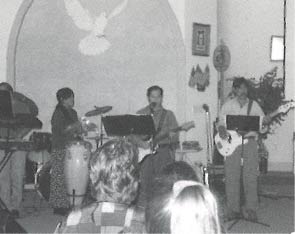
The Next Generation
But they’re temporary, and they know it. Their children would rather eat hamburgers than sticky rice. Kids speak English and likely wouldn’t get much out of the worship, which is why they depart halfway through. Lao Unity faces major changes in the near future, dependent as it is right now on growth from within the dwindling numbers of Lao speakers in the region. Like all ethnic churches, it will need to create something new when their language dies away as a cultural and religious medium.
Like all our worship, what happens at Lao Unity is time-bound, even though it is aimed, in part, at eternity.

